Table of contents
This is the definitive disability insurance guide.
You will learn about the sources of income during a disability, features of a disability insurance policy, how much disability insurance costs, and much more.
So if you want to know how to protect your income if you are unable to work due to an injury or illness, you’re in the right place.
- Key takeaways:
- Disability insurance is vital if you rely on your earned income to support you and your family's lifestyle.
- Although you can get disability coverage from sources like CPP, Workers' Compensation, and more, these programs don't give you enough coverage or have limitations.
- The cost of disability insurance depends on factors like your age, gender, smoking status, occupation, and much more.
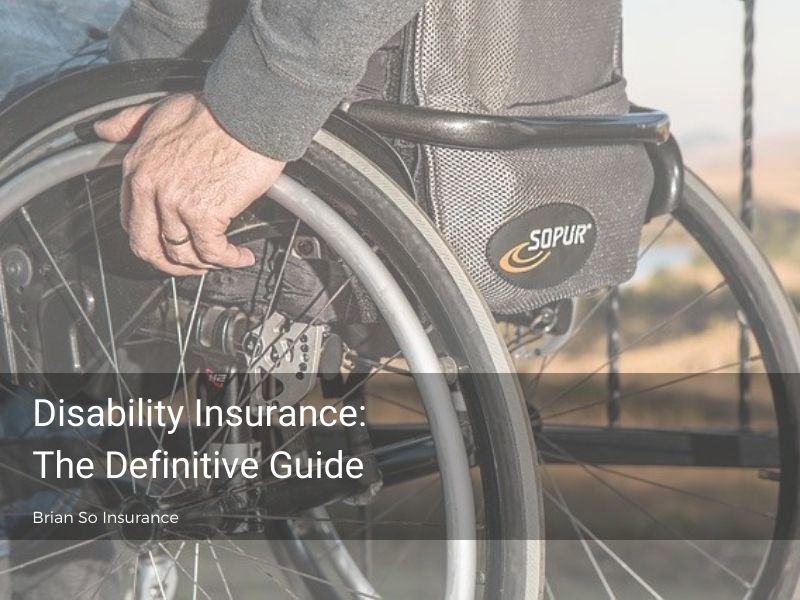
1. Why Do You Need Disability Insurance?
Most people realize they need life insurance to protect their families in case they die prematurely. But many underestimate the importance of disability insurance.
Here are some statistics that show the prevalence of disabilities.
Disability statistics
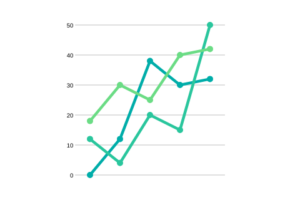
Did you know that one in three people will become disabled for 90 days or longer before the age of 651?
And when a disability lasts longer than 90 days, the length of that disability averages between 2.1 and 3.2 years.
Or that over a billion people or just about 15% of the population live with a disability?
In Canada, the percentage is even higher. In 2017, 22% of the population aged 15 and older lived with a disability.
Disabilities have a huge impact on a person’s finances. 28% of people aged 25-65 with severe disabilities live below the poverty line. A survey by RBC showed that:
- 48% of Canadians are not financially prepared to be off work
- 76% said it was stressful for the entire household
- 31% said their able partner had to find extra work to make ends meet
These statistics show why disability insurance should be higher on the list of priorities for insurance. Except that for most people, it’s not.
In fact, half of Canadians don’t have any kind of disability insurance coverage to protect their income.
If you owned the goose that laid a golden egg...

What would you insure first? The goose or the egg?
Most people would choose the goose since if something were to happen to the egg, the goose can always lay another one.
But if something were to happen to the goose, you can say goodbye to any golden eggs in the future.
That’s exactly the scenario that most Canadians are facing.
In reality, they insure the golden egg first. The egg represents their assets (home, car, business assets, rental properties, boats, etc.) which they’ve prioritized to insure. The goose represents their earning power, which is not prioritized as high.
Does this seem backward to you? What happens if you lose your earning power because of an illness or injury? How much do you stand to lose?
Let’s look at how much the goose is worth.
How much can you earn in your lifetime?

For most working Canadians, this number is well over a million dollars.
Depending on your income, some of you may have earned multiples of millions of dollars by the time you reach age 65.
For example, if you are 35 and make $50,000 annually, your potential earning to age 65 is almost $2.2 million (assuming an increase of 2.5% every year). The table below shows the potential earnings at different starting ages and annual income.
| Annual income | ||||||
|---|---|---|---|---|---|---|
| Age | $30,000 | $50,000 | $70,000 | $100,000 | $150,000 | $200,000 |
| 25 | $2,022,077 | $3,370,128 | $4,718,179 | $6,740,255 | $10,110,383 | $13,480,511 |
| 30 | $1,647,846 | $2,746,410 | $3,844,975 | $5,492,821 | $8,239,231 | $10,985,641 |
| 35 | $1,317,081 | $2,195,135 | $3,073,189 | $4,390,270 | $6,585,405 | $8,780,541 |
| 40 | $1,024,733 | $1,707,888 | $2,391,043 | $3,415,776 | $5,123,665 | $6,831,553 |
| 45 | $766,340 | $1,277,233 | $1,788,126 | $2,554,466 | $3,831,699 | $5,108,932 |
| 50 | $537,958 | $896,596 | $1,255,235 | $1,793,193 | $2,689,789 | $3,586,385 |
| 55 | $336,101 | $560,169 | $784,237 | $1,120,338 | $1,680,507 | $2,240,676 |
| 60 | $157,690 | $262,816 | $367,943 | $525,633 | $788,449 | $1,051,266 |
As you can see, the goose is worth a lot. In fact, it is your most valuable asset. That’s why more than anything else, you need to insure your ability to earn an income.
But you might be thinking you’re already insured through work or that the government has your back. In reality, these sources have severe limitations and don’t offer the most comprehensive benefits.
Let’s take a look at each source of disability income in the next section.
2. Sources Of Income During A Disability
In Canada, the problem isn’t the lack of disability income sources. The problem is that every source has major limitations, so you end up thinking you’re properly covered when in fact a long-term disability may result in catastrophic financial consequences.
Employment Insurance (EI)

Employment Insurance is a federally administered program that provides benefits for workers suffering from a short-term disability.
Who pays for it: Both employer and employee.
Eligibility: You have to be employed in an insurable employment and have paid EI premiums. You must be unable to work due to sickness, injury or quarantine.
Benefits: Weekly benefits amount to 55% of insurable earnings, up to $650/week in 2023. Benefits are taxable and are payable for a maximum period of 26 weeks.
Self-employed: You must register with the Canadian Employment Insurance Commission if you want to access the EI program.
Drawbacks: Although the EI sickness benefit is a source of income for short duration injuries and illnesses, it provides no financial relief for long-term disabilities.
Canada Pension Plan (CPP)
Besides the retirement pension, the Canadian Pension Plan (CPP) also pays out a monthly benefit for Canadian workers who can’t work due to a disability.
Who pays for it: Both employer and employee.
Eligibility: You must have a severe and prolonged disability, be under the age of 65, and meet the CPP contribution requirements.
Benefits: For 2023, the maximum monthly disability pension is $1,538.67. The benefit is taxable and indexed to inflation. The benefit lasts until age 65 when it’s replaced by the regular CPP retirement pension.
Your dependent child(ren) can also get a children’s benefit. In 2023, the flat monthly rate a child can receive is $264.53.
Self-employed: Since you have to contribute to CPP even if you’re self-employed, your eligibility and benefits are the same as any other employed Canadian.
Drawbacks: Benefits are hard to qualify for. Also, the low maximum means it’s not nearly enough for the majority of Canadians as income replacement.
Workers' Compensation

Workers’ Compensation is legislated by the provincial government. It’s funded entirely by employer contributions to protect employees from the financial hardships associated with work-related injuries and occupational diseases.
Who pays for it: Employer.
Eligibility: The disability must be caused by a work-related accident or illness.
Benefits: In BC, WorksafeBC pays about 90% of your net weekly earnings, up to a maximum of $112,800 annual earnings in 2023.
Self-employed: In BC, if you don’t have any employees or contractors, you don’t need to register for WCB.
Drawbacks: Accidents make up less than 10% of all disabilities. Chances are, if you become disabled, it won’t be from a workplace accident.
Here is a table summarizing the benefits provided by the three government disability insurance programs.
| EI | CPP | WCB | |
|---|---|---|---|
| Maximum benefit | $650 weekly | $1,538.67 monthly | 75-90% of net income up to a maximum amount, varies by province |
| Waiting period before benefits begin | 14 days | 4 months | 0 days |
| Length of benefit period | 26 weeks | Until age 65 or until disability ends | Until age 65 or until disability ends |
| Taxable benefit? | Yes | Yes | No |
| How to qualify? | You have accumulated at least 600 hours of employment in the last 52 weeks | You have contributed to CPP in 4 of the last 6 years, are under age 65, and meet the definition of severe and prolonged disability | You are injured on the job |
| Other benefits | Enhanced benefit for low income families | -Benefits available for children of disabled individual -Vocational rehabilitation program | -Lump sum benefit available for permanently disabled workers -Death benefit if death due to workplace accident -Rehabilitation benefits |
Auto insurance
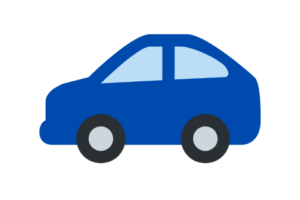
If you can’t work because of a car accident, your insurance company will pay you benefits for lost wages.
In BC, ICBC covers you 90% of your net income up to $100,000, no matter who is at fault for the crash.
Note that if you have other sources of benefits, you have to apply for those before ICBC benefits are payable. If you qualify for those other sources, ICBC becomes the second payor and may have its benefits reduced.
Group disability insurance (employer, association, or union)
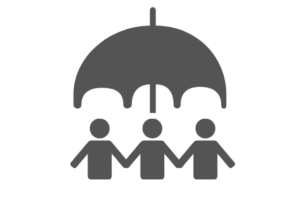
Disability insurance is often a component of group benefits that also includes life insurance, extended health care, and dental coverage. Employers, associations, and unions offer these benefits to their employees and members.
Group disability insurance provides short-term coverage for 4.6 million Canadians and long-term coverage for over 10 million Canadians.
Short-term disability insurance
Short-term disability insurance bridges the gap between your income and long-term disability insurance. The benefit starts after a short waiting period and lasts between four to six months. It replaces a percentage of your earnings up to a maximum amount.
Here are some common short-term disability plan designs that employers use:
- Waiting period
- Accident: zero to 14 days
- Sickness: three, seven or 14 days
- Benefit percentage
- Non-taxable (employee-paid): 50%, 55%, 60%, 66.7%
- Taxable (employer-paid): 50%, 55%, 60%, 66.7%, 70%, 75%, 80%
- Maximum benefit: $500 to $1,500 weekly, or current EI maximum
- Benefit payment period: 13, 15, 17, 26 or 52 weeks
Long-term disability insurance
Unlike short-term disability insurance, long-term disability insurance replaces income if you cannot work for an extended period because of total disability.
To qualify for benefits, you must satisfy the definition of total disability. This means you’re unable to perform the tasks in your regular occupation during the disability period.
After two years, the definition changes so that you must be unable to work in any occupation for which you are qualified by training, education, or experience to continue receiving benefits.
Here are some common long-term disability plan designs that employers use:
- Waiting period: 90, 105, 120 or 180 days
- Benefit percentage
- Non-taxable (employee-paid): 50%, 55%, 60%, 66.7%
- Taxable (employer-paid): 50%, 55%, 60%, 66.7%, 70%, 75%, 80%
- Maximum benefit: $1,500 to $10,000 monthly
- Benefit payment period: Two years, five years or to age 65
- Definition of disability: Any occupation from the beginning or after two years
Drawbacks
Calculation of income: Some group plans only include base salary in calculating the benefit amount, omitting bonuses and commission.
Some plans also calculate your benefit based on your income in the period prior to your disability, instead of guaranteeing it from the beginning.
Limited protection: To save on costs, many employers choose a low maximum benefit amount like $2,500/month. This isn’t enough to replace the income for the majority of employees, let alone high-income earners.
Most plans also don’t provide any coverage for reduced disabilities. This means that even if you can work but at a reduced capacity, you don’t get any benefits.
The definition of total disability also changes after two years, making it harder for you to qualify for benefits.
Benefits aren’t indexed to inflation. This means that if you go on a long-term claim, your benefits don’t increase to keep up with the cost of living.
Increasing premium: If you’re paying for a portion or all of the disability insurance, you should know that your premium isn’t level. In fact, the rate increases exponentially as you get older.
Lack of portability: Benefits are not portable to a new occupation and cannot be converted to an individual plan. If your new employer doesn’t have disability insurance, you’re left without any coverage.
Lack of control: As the employee, you have little control over your benefits. Disability insurance is a costly component of group benefits. If premiums increase, your employer can reduce the benefits or remove it from the plan.
Individual disability insurance
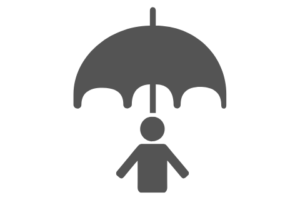
To address all the drawbacks from each of the sources listed above, you have to get your own individual disability insurance policy.
An individual policy is customizable to fit your needs. You can choose:
- The monthly benefit amount
- The waiting period
- The benefit period
- The definition of disability
- To cover partial or reduced disabilities
- To cover accidents and/or sickness
- Additional riders to improve your coverage
Besides getting the disability benefits tax-free, coverage stays with you even if you change jobs.
An individual policy is essential for the self-employed and business owners who don’t have coverage through an association.
How to supplement your group disability insurance with an individual policy
You might already have disability insurance through your employer. But because of the limitations of group coverage, you can buy an individual disability policy to fill the gaps in coverage.
There are three ways to do that:
1. Top-up
To top up your coverage, you can increase your monthly benefit to the maximum amount that you qualify for based on your income. For example, you qualify for $5,000/month but the limit in your group plan is $2,500/month. You can simply buy the difference as a top-up.
2. Offset
An offset is where you ignore the group disability insurance and buy the maximum amount that you qualify for. Using the above example, you would buy $5,000/month in benefits.
This protects you from losing any coverage if you change jobs. It also protects you in case your group plan doesn’t pay out because of more a restrictive definition.
You can get a 10% discount on your premium if you buy the entire $5,000/month benefit. That’s because your benefits are reduced if the group coverage pays out. This protects against overinsurance.
3. Wrap-around
Because group disability coverage includes the any occupation definition after two years of disability, it gets harder to qualify for benefits. You can buy an individual policy with a two-year waiting period so that benefits kick in after your group benefits end.
3. Features Of An Individual Disability Insurance Policy
What types of disabilities are covered?
How much do you get every month?
How long are benefits paid for?
In this section, you’ll find the answers to these and many more questions about an individual disability insurance policy.
Keep in mind that not all policies are created equal. When you compare policies, you should compare all the features, not just the premium.
Types of disabilities covered
Does it matter how you’re disabled? For some policies, yes! These are the two types of disability insurance policies commonly found.
Accidents only: As the name suggests, you only get paid if you’re disabled from an accident. But because accidents only make up less than 10% of all disabilities, you’re leaving yourself exposed if you buy these types of policies.
Accident and sickness: The other 90% of disabilities result from sickness, so these are the types of policies that you want to seek out.
Definition of total disability
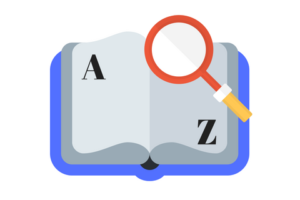
To qualify for benefits, you have to meet the definition of disability.
Own occupation: You’re considered totally disabled if you cannot perform the important duties in your regular occupation. Your benefits continue even if you engage in a new occupation.
This is the best definition of disability and is only available to professionals and business executives as a rider.
Regular occupation: You’re considered totally disabled if you cannot perform the important duties in your regular occupation. Your benefits stop if you engage in a new occupation.
If you don’t want or qualify for own occupation, regular occupation is the next best thing.
Some policies default to a two-year regular occupation period, but you can extend it to the duration of the benefit period.
You will also find the two-year regular occupation period in group disability insurance. After two years, you have to qualify based on the any occupation definition.
Any occupation: You’re considered totally disabled if you cannot perform the duties of any gainful occupation for which you are reasonably qualified, based on your education, training, or experience.
Does that mean you’re forced into an entry-level job if you’re an executive? No.
The new occupation must be comparable in status and earnings to your former line of work. So you don’t have to worry about being forced into a low paying job if you’re overqualified for it.
Having said that, any occupation is still the worst definition for you and the most difficult to qualify for benefits.
Reduced disability
Not all injuries or illnesses result in total disability. Sometimes, your ability to perform the duties of your occupation is only partially hindered.
Maybe you can’t perform some of the tasks or can only do them for a shorter duration. Or maybe you suffer an income loss because of your partial disability.
Does that mean your disability insurance policy won’t pay you any benefits? It depends on the reduced disability clause in your policy.
Partial disability: The benefits payable is based on a loss of time or duties.
You’re considered partially disabled if due to an injury or sickness, you can’t perform one or more important duties of your regular occupation, or you can’t work for more than half the usual time.
Usually, the disability insurance policy pays 50% of the monthly benefit for the first 24 to 36 months and 25% of the monthly benefit thereafter.
Residual disability: This provides benefits that are proportional to a loss of income.
For example, if you experience an income drop by two-thirds, you would receive two-thirds of the monthly benefit.
The minimum amount of income loss to receive the benefit is 20% and for losses greater than 80%, the entire monthly benefit is paid out.
Occupation class
The type of duties you perform and the nature of the industry you work in have a tremendous impact on the risk of disability.
For example, an arm or leg injury may only disable an office worker for a week or two, but the same condition could cause a construction worker to miss work for a much longer period.
Certain occupations are also more prone to disabilities. The construction worker who engages in more physically demanding tasks will be more likely to become disabled than the office worker who performs light duties.
Some occupations are also more stressful, leading to more disability claims due to mental illnesses. That’s why someone in a high-risk occupation class has to pay more than an identical person in a low-risk occupation class.
Let’s look at how insurance companies classify occupation classes.
4A: These occupations have the lowest risk and a high degree of stability. Most of these occupations require a significant amount of post-secondary education. They are in fields where disabled individuals are more motivated to return to work.
Examples:
- Accountants
- Architects
- Computer programmers
- Doctors
- Dentists and dental specialists
- Engineers
- Judges
- Lawyers
- Optometrists
- Pharmacists
- University professors
- Veterinarians
3A: These occupations require little physical exertion or effort other than expected in clerical or similar non-hazardous work. Most white-collar workers fit under this occupation class.
Examples:
- Administrative assistants
- Bank tellers and managers
- Bookkeepers
- Business owners and executives who perform office duty only
- Chiropractors
- Clerks
- Librarians
- Mortgage brokers
- Occupational therapists
- Office workers
- Opticians
- Paralegals
- Photographers
- Physiotherapists
- Receptionists
- Speech therapists
- Teachers
- Travel agents
2A: This occupation class contains skilled specialized workers who don’t qualify for 3A. The degree of risk or physical activity is higher than 3A occupations. 2A includes most of the sales and supervisory occupations.
Examples:
- Acupuncturists
- Car salespeople
- Commercial realtors
- Computer technicians
- Event planners
- Farm owners
- Florists
- Health inspectors
- Home inspectors
- Insurance adjusters
- Midwives
- Registered massage therapists
- Registered nurses
- Parole officers
- Reporters
- Salespeople and clerks with sales duties only
- Social workers
A: This occupation class contains skilled manual workers in the lighter trades. Some unskilled manual workers where duties are light and working conditions are favourable also belong to class A.
An extremely hazardous working environment (eg. heat, chemicals, explosives, heavy equipment/machinery) must be absent to qualify for class A.
Examples:
- Bakers
- Bus drivers
- Bylaw enforcement officers
- Car mechanics
- Chefs
- Dental assistants
- Dental hygienists and assistants
- Dog trainers
- Driving instructors
- Electricians
- Mental health counsellors
- Music teachers working from home
- Plumbers
- Property managers
- Registered nursing assistant
- Residential realtors
- Servers
- Unarmed security guards
B: This occupation class is reserved for jobs requiring heavy physical exertion.
These occupations involve a considerable amount of risk and a high rate of absenteeism
Working conditions are more hazardous and can involve extreme heat, humidity or temperature changes.
Because of the extreme physical exertion, disabilities last longer compared to the lower risk occupation classes.
Examples:
- Ambulance drivers
- Armed security guards
- Barbers and hairdressers
- Bartenders
- Carpenters
- Cement and concrete workers
- Cleaners and janitors
- Contractors
- Drivers (long-haul or heavy vehicle)
- Drywallers
- Estheticians
- Firefighters
- Forklift and heavy equipment operators
- Garbage truck drivers
- Lifeguards
- Paramedics
- Personal trainers
- Police officers
- Prison guards
- Roofers
- Swimming instructors
- Yoga instructors
Uninsurable occupations: Some occupations are uninsurable because of unusual physical hazards and/or stress or because of a high degree of job instability.
Examples:
- Actors
- Air traffic controllers
- Artists
- Athletes
- Authors
- Bodyguards
- Chauffeurs
- Construction workers involving hazardous work
- Daycare operators in the home
- Flight attendants
- Flight instructors
- Housekeepers, cleaners, and maids
- Judo, karate, and martial arts instructors
- Longshoremen
- Models
- Postal service workers
- School bus drivers
- Ski instructors
- Singers
- Tattoo artists
- Taxi drivers
- Undercover police officers
- Videogame players
Remember, it’s the actual duties and not the job title that is important in determining the occupation class. If you have several duties, the percentage of time spent on each duty dictates your occupation class.
If you meet certain experience and income threshold requirements, you can upgrade your occupation class.
This has the potential of saving you thousands of dollars on your premiums over the life of the policy!
Taxability
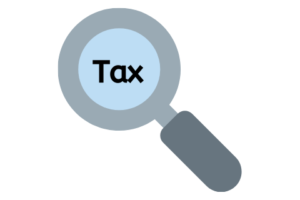
Because you pay for an individual disability insurance policy with after-tax dollars, the monthly benefits are tax-free.
If your employer pays for your group disability insurance, the benefits are taxable.
However, if you pay a portion of the premiums, you can deduct the amount you pay from any taxable benefit you receive.
Renewability
Non-cancellable: These policies provide the strongest renewal privilege for the policy owner. With a non-cancellable policy, the insurance company can’t:
- Cancel the policy
- Increase the rates
- Make any changes to the terms of the policy
- Reduce the benefits because of a change to a more hazardous occupation.
Guaranteed renewable: This has the next best renewal privilege. It’s like the non-cancellable policy except the insurance company can increase the rates. Rates can only increase for the entire class and not for a single person.
The best disability insurance policies are non-cancellable until age 65 and guaranteed renewable thereafter.
Conditionally renewable: After age 65, your ability to renew the policy is conditional on your continued employment.
Cancellable: These policies can be canceled by the insurance company at its discretion. They provide the worst guarantees and should be avoided if possible.
Built-in benefits

These built-in benefits improve your disability insurance policy. Not every product contains these benefits, so make sure you find out which ones are included in the policy you buy.
Waiver of premium: Premiums are waived after a disability has continued for 90 days or from the day benefits are payable, if earlier.
Accumulation of days to satisfy waiting period: The waiting period is the number of days you’re disabled before benefits begin. Sometimes, you return to work before benefits start, only to become disabled again later on. You can add the days from the two separate absences together to meet the waiting period. That’s assuming the absences are due to the same or related causes and are separated by less than six, 12 or 24 months (number of months depends on the policy).
Recurrent disability: A recurrent disability is one that occurs within six or 12 months (number of months depends on the policy) of an earlier disability claim and results from the same or related causes. The second disability is considered to be a continuation of the first so you don’t have to satisfy the waiting period again.
Rehabilitation benefits: Subject to approval by the insurance company, benefits will continue if you participate in approved vocational rehabilitation programs. Also, the insurance company may agree to pay for the costs of such programs, since it could result in your return to work sooner than anticipated.
Recovery benefits: The insurance company may continue to pay a decreased benefit after you have returned to work from a disability if you still experience a loss of income. The benefit helps you transition back to work and can last anywhere from two to six months, depending on the policy.
Catastrophic disability: Your monthly benefit is increased by 25% and the waiting period is waived if you suffer a catastrophic disability. A catastrophic disability is defined as:
1. Total and permanent loss of one of the following: sight of both eyes, hearing of both ears, speech, or the use of both hands, feet, or a hand and a foot;
2. The inability to perform two of the following six activities of daily living: feeding, bathing, dressing, transferring, toileting and continence;
3. Requiring substantial supervision because of a cognitive impairment; or
4. The diagnosis of a terminal illness with a life expectancy of less than one year.
Long-term care conversion: This option allows you to convert some or all of your disability insurance into long-term care insurance with no medical underwriting. This is useful upon retirement when you don’t need disability insurance coverage anymore but want insurance in the event you become dependent on another person to perform your normal activities of daily living (e.g. bathing, feeding, toileting, etc.)
Survivorship benefit: If you die while on a claim, the insurance company will pay a lump sum benefit equal to three times the monthly benefit to your estate. This helps surviving family members pay for final expenses like funeral costs.
Transplant surgery benefit: If the policy has been in force for over six months, any disability due to cosmetic or donor transplant surgery will qualify as a disability for a claim.
Benefit period

The benefit period is how long the insurance company pays your claim.
The most common choices are two years, five years, and to age 65. The longer the benefit period, the more expensive the policy.
You should always get the longest benefit period to protect against long-term disabilities.
If the duration of the disability is shorter than the benefit period, then payments will stop when the disability ceases.
Benefits begin at the end of the month after you have met the waiting period and is paid until the end of the benefit period.
The benefit period applies to each new claim. For example, you buy a policy with a two-year benefit period. If you are disabled for three years, return to work for ten years, and are disabled again for another three years, then you can make a claim of two years for each of your disabilities.
For policies with the recurrent disability benefit, disabilities that recur within six or 12 months are considered one disability. The second period of absence from work is considered a continuation of the first period, and the entire claim shares one benefit period.
Waiting (elimination) period
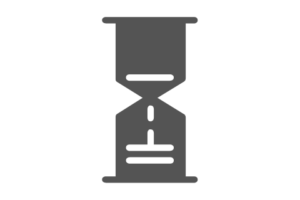
The disability insurance waiting period, also known as the elimination period, is the period of time that must elapse from the beginning of a disability before the insurance company pays benefits. Benefits begin at the end of the month after you have satisfied the waiting period.
Common waiting periods are 30, 60, 90, 120, 180, 365 and 730 days. The shorter the waiting period, the more expensive the policy. The sweet spot for waiting periods is 90 or 120 days.
Why? Because you should have an emergency fund to cover expenses for the first three to four months. Any shorter and the premium becomes too expensive. Any longer and your benefits won’t start soon enough.
Maximum issue limits
This is the maximum coverage you can purchase based on your age, occupation class, and income.
By replacing a percentage of your income, you’re protected from a disability, and at the same time maintain the incentive to return to work.
Younger people and people in a lower risk occupation class can buy more coverage than older people and people in a higher risk occupation class.
Here are the limits based on age and occupation class:
| Occupation class | |||||
|---|---|---|---|---|---|
| Age | 4A | 3A | 2A | A | B |
| 18 to 55 | $24,500 | $15,000 | $8,000 | $6,000 | $4,000 |
| 56 to 60 | $12,000 | $8,000 | $5,000 | $4,000 | $3,000 |
After taking age and occupation class into consideration, your earned income is then used to calculate your ultimate maximum issue limit.
Earned income includes your salary, bonus, commissions, and fees. If incorporated, you can also include your share of the net profits of the corporation before taxes.
Here are the limits based on your earned income:
| Annual earned income | Monthly earned income | Maximum benefit | Benefit as a percentage of income |
|---|---|---|---|
| $15,000 | $1,250 | $1,050 | 84% |
| $17,500 | $1,417 | $1,175 | 81% |
| $20,000 | $1,750 | $1,350 | 77% |
| $25,000 | $2,083 | $1,600 | 77% |
| $30,000 | $2,583 | $1,900 | 74% |
| $35,000 | $2,917 | $2,150 | 74% |
| $40,000 | $3,333 | $2,450 | 74% |
| $45,000 | $3,750 | $2,700 | 72% |
| $50,000 | $4,167 | $3,000 | 72% |
| $60,000 | $5,000 | $3,450 | 69% |
| $70,000 | $5,833 | $3,900 | 67% |
| $80,000 | $6,667 | $4,400 | 66% |
| $90,000 | $7,500 | $4,800 | 64% |
| $100,000 | $8,333 | $5,200 | 62% |
| $110,000 | $9,167 | $5,500 | 60% |
| $120,000 | $10,000 | $5,900 | 59% |
| $130,000 | $10,833 | $6,250 | 58% |
| $140,000 | $11,667 | $6,600 | 57% |
| $150,000 | $12,500 | $6,950 | 56% |
| $175,000 | $14,167 | $7,725 | 55% |
| $200,000 | $16,667 | $8,500 | 51% |
| $250,000 | $20,833 | $9,900 | 48% |
| $300,000 | $25,000 | $11,250 | 45% |
| $350,000 | $29,167 | $12,350 | 42% |
| $400,000 | $33,333 | $13,500 | 41% |
| $450,000 | $37,500 | $14,600 | 39% |
| $500,000 | $41,667 | $15,700 | 38% |
| $600,000 | $50,000 | $18,300 | 37% |
| $700,000 | $58,333 | $20,600 | 35% |
| $800,000 | $66,667 | $22,850 | 34% |
| $900,000 | $75,000 | $24,500 | 33% |
| $1,000,000 | $83,333 | $24,500 | 29% |
Low-income individuals can replace a larger percentage of their income than high-income people. That’s because high-income people pay a larger percentage of their income in taxes and benefits are non-taxable.
You should always buy the maximum amount of coverage that you are eligible for.
Why? Because your goal is to replace as much of your income as possible in the event of a disability.
Exclusions
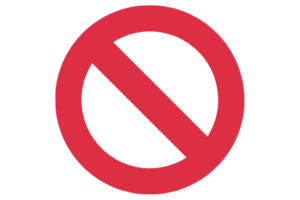
These are situations that are specifically excluded in the policy.
Some disability insurance policies have more exclusions than the ones listed below.
Normal pregnancy or childbirth: However, the policy will provide coverage for disabilities that arise from complications of pregnancy or childbirth, including extra-uterine pregnancy, pernicious vomiting, post-partum hemorrhage, and toxemia.
Act of war: Coverage is excluded for an act or accident of war, declared or undeclared, or due to any type of military conflict.
Donor transplant surgery or cosmetic surgery: These disabilities are excluded during the first six months of the policy.
Incarceration: Benefits aren’t payable while you are incarcerated in a penal institution or government detention facility.
Integration
Since there are so many sources of disability income (CPP, Workers’ Compensation, group LTD, individual DI, automobile insurance), benefits could overlap. This results in overinsurance, where your disability income is higher than your working income.
Overinsurance is a concern for insurance companies. That’s because if you earned more while disabled than through employment, there would be little incentive for you to overcome your disability and return to work. Insurance companies would be stuck paying a long-term claim.
That’s where integration comes in to play. Integration reduces the benefits from the disability insurance policy if you’re receiving benefits from other sources.
Integration means that your benefits from a source like group or individual disability insurance could be reduced if you’re already receiving income from another source like CPP or Workers’ Compensation.
4. Disability Insurance Riders
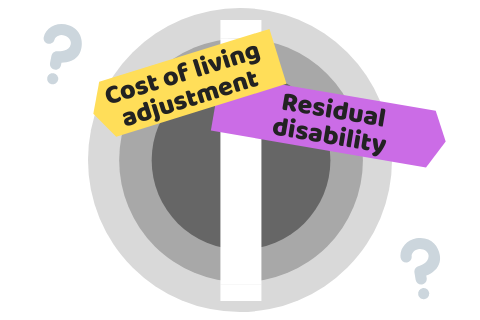
Riders are optional features that can be added to an insurance policy for an extra cost. Here are some common riders:
Own occupation: Most policies have the regular occupation definition of total disability. This rider upgrades the definition to own occupation.
Regular occupation extender: If the regular occupation period is only two years, you can extend it with this rider to equal the benefit period (usually five years or to age 65).
Cost of living adjustments: Disabilities can last for many years. A flat benefit amount isn’t enough to keep up with inflation. With this rider, benefits are indexed to inflation every year you’re on a claim.
At an inflation rate of 3%, your original benefit would double after 24 years on a claim. This is an extremely important rider to protect yourself from a long-term claim.
Future insurance option: This rider lets you increase your benefit amount in the future without medical evidence of insurability. This is important because you never know if a medical condition might make it hard for you to qualify for more coverage in the future.
However, you still have to show proof of a higher income to increase your coverage.
Residual or partial disability: Some policies don’t have these benefits built-in, so you have to add them as a rider.
Refund of premium: This rider refunds half the premium you paid if you don’t end up making a claim. You get the refund seven or eight years after your policy is in effect, depending on the policy.
Healthcare protection: If you are a healthcare professional who is infected with HIV, hepatitis B or hepatitis C, it could have major career implications.
Because you’re not physically disabled, you won’t qualify for benefits. But legislation or regulations may prohibit you from performing your occupation.
This rider expands the definition of disability to include “limitation due to seropositive status.” Seropositive means you carry HIV, HBV or HCV and are at risk of transmitting it to others.
Retirement protector: If you suffer a long-term disability, your retirement plans will be affected. This rider pays an additional benefit that’s deposited into a retirement account designated by the insurance company.
5. Disability Insurance Underwriting
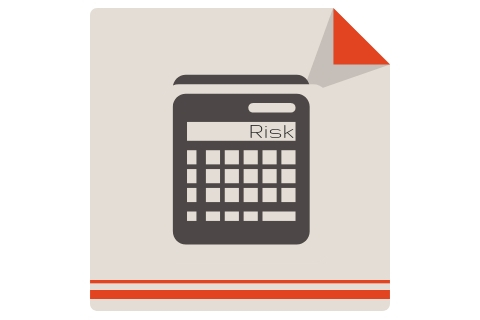
Underwriting for disability insurance is much different than for life insurance. That’s because life and disability insurance have different risks.
For life insurance, your occupation doesn’t matter too much. But for disability insurance, your occupation plays a huge role in underwriting since it’s a factor that affects your probability of suffering a disability.
Your income and net worth are also much more important in disability insurance than life insurance. This is called financial underwriting.
Underwriting decisions

Standard: If you fall within the normal level of risk, your policy will be rated standard. That means your premium is the same as what you were quoted.
Rating: You’re charged an extra premium to offset a higher level of risk. The amount of extra premium depends on the severity of your lifestyle and medical conditions.
Benefit reduction: To reduce its risk, the insurance company either reduces the benefit amount or extends the waiting period.
Exclusion: When your risk is too high to apply a rating, but not high enough to decline, the insurance company can apply exclusions.
The insurance company can apply a full exclusion where a pre-existing medical condition or dangerous hobby is excluded. Or it can apply a limited period exclusion, where the condition or avocation is excluded for a period of time.
Alternate offer: Most insurance companies have several disability insurance products. The ones tailored to professionals and executives have the most comprehensive protection. Other products are more appropriate for blue-collar and skilled trade industries. These have fewer guarantees and built-in benefits and more exclusions.
If the insurance company doesn’t want to give you the top-of-the-line option, it might offer you the lower end product instead.
Decline: The insurance company declines you if it determines that your risk is too high that even if it applied any of the above decisions.
Mandatory decline conditions: These are medical conditions that result in an automatic decline because of the risk of disability. These include but are not limited to:
- Alcoholism
- Illicit drug use
- Cirrhosis
- Currently pregnant with complications
- HIV positive or diagnosed with AIDS
- Chronic fatigue
- Muscular dystrophy
- Multiple sclerosis
- Parkinson’s disease
- Amyotrophic lateral sclerosis (ALS)
- Schizophrenia
- Cystic fibrosis
- Alzheimer’s disease or dementia
6. How Much Does Disability Insurance Cost? (Sample Quotes)
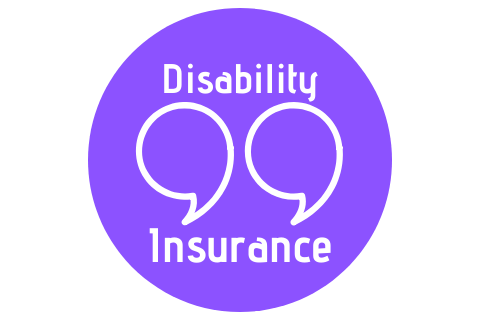
Now that you know the ins and outs of individual disability insurance, you’ll want to know how much a disability insurance policy costs.
There are a lot of factors that affect the premium, including the:
- Benefit amount
- Definition of total disability
- Presence of reduced disability benefits
- Benefit period
- Waiting period
- Occupation class
- Renewability of the policy
- Riders added to the policy
Because of these factors, disability insurance quotes are much more difficult to get, unlike life insurance whose quotes are easily found online.
To give you a general idea of the cost, below are four premium comparison tables, one for each of the following categories: male non-smoker, male smoker, female non-smoker, female smoker.
These tables show the monthly premium with these benefits:
- Benefit amount of $3,000/month
- Regular occupation definition of total disability to age 65
- Residual and partial disability included (except for occupation class B, where only partial disability is available)
- Benefit period to age 65
- Waiting period of 120 days
- Non-cancellable renewability
- Cost of living adjustment rider
Disability insurance, $3,000/month, male non-smoker
| Occupation class | Age 30 | Age 40 | Age 50 | Age 60 |
|---|---|---|---|---|
| 4A | $62.80 | $90.62 | $141.69 | $254.44 |
| 3A | $87.95 | $130.59 | $210.35 | $375.24 |
| 2A | $123.60 | $170.44 | $273.36 | $436.50 |
| A | $147.54 | $210.29 | $339.38 | $524.52 |
| B* | $181.87 | $263.32 | $422.29 | $655.04 |
Disability insurance, $3,000/month, male smoker
| Occupation class | Age 30 | Age 40 | Age 50 | Age 60 |
|---|---|---|---|---|
| 4A | $86.10 | $125.09 | $196.61 | $354.39 |
| 3A | $121.38 | $181.00 | $292.70 | $523.55 |
| 2A | $171.23 | $236.84 | $380.90 | $609.30 |
| A | $204.73 | $292.57 | $473.31 | $732.47 |
| B* | $252.82 | $366.87 | $589.43 | $915.27 |
Disability insurance, $3,000/month, female non-smoker
| Occupation class | Age 30 | Age 40 | Age 50 | Age 60 |
|---|---|---|---|---|
| 4A | $112.05 | $145.76 | $182.65 | $275.66 |
| 3A | $146.09 | $197.70 | $250.56 | $381.50 |
| 2A | $192.36 | $253.44 | $317.25 | $477.94 |
| A | $208.67 | $280.98 | $364.44 | $597.91 |
| B* | $250.67 | $336.17 | $435.74 | $723.35 |
Disability insurance, $3,000/month, female smoker
| Occupation class | Age 30 | Age 40 | Age 50 | Age 60 |
|---|---|---|---|---|
| 4A | $165.80 | $216.46 | $271.72 | $411.23 |
| 3A | $218.12 | $294.30 | $373.62 | $569.99 |
| 2A | $286.33 | $377.94 | $473.59 | $714.66 |
| A | $310.82 | $419.22 | $544.37 | $894.58 |
| B* | $373.73 | $502.03 | $651.37 | $1,082.77 |
If you’d like a quote tailored to your specific situation, fill out the form on the bottom of the page.
7. Disability Insurance Claims
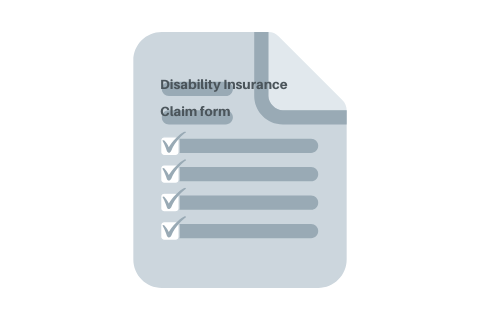
Contrary to popular belief, accidents don’t account for the majority of disability insurance claims.
In fact, mental disorders and musculoskeletal issues make up a large proportion of claims. Mental health issues include but aren’t limited to depression and anxiety. Musculoskeletal issues include but aren’t limited to back pain, neck pain, and carpal tunnel syndrome.
Some policies offer coverage for injuries only. But since injuries only make up 14% of claims, you’re only protecting a small percentage of your potential disabilities.
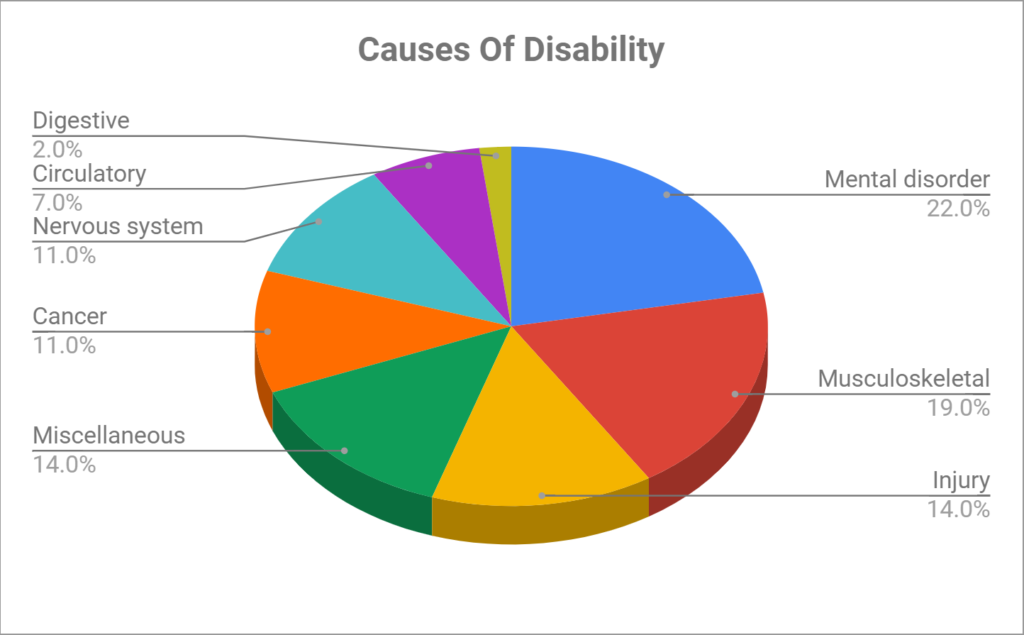
Disabilities also don’t discriminate against age. As you can see, people of all ages can suffer a disability.
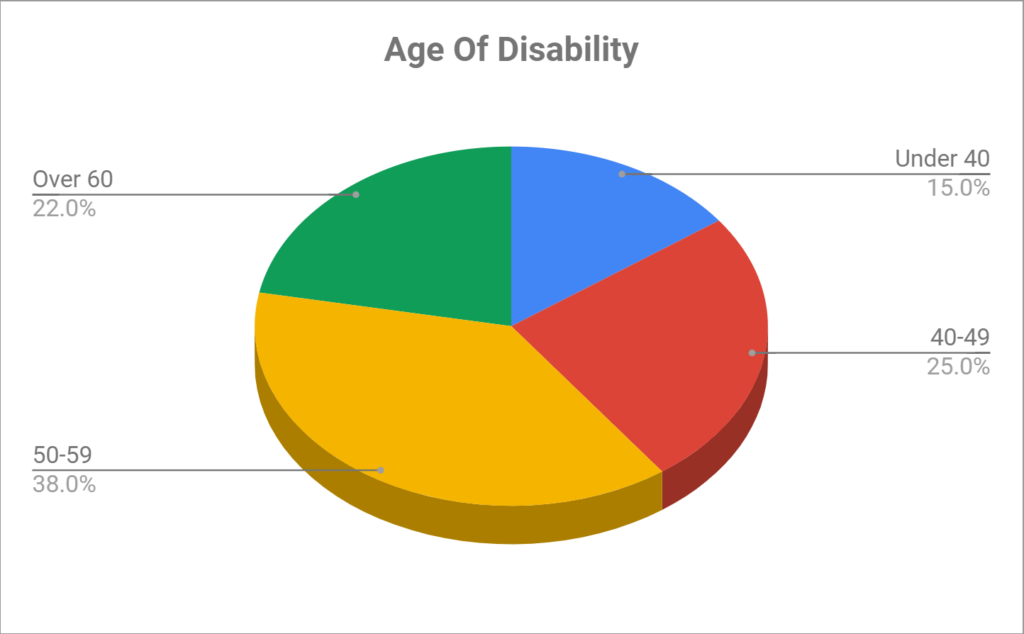
Another important thing to note is whether you need to verify your income at the time of claim.
With the comprehensive disability insurance products, you don’t need to verify your income at the time of a claim. That’s because you already proved it at the time of application.
This is a huge advantage over the lower-end products.
With these ones, you need to prove your income at the time of claim. That means if your income dropped, you get a lower monthly benefit than what you applied for.
Did This Disability Insurance Guide Answer Your Questions?
Are you looking for disability insurance coverage to protect your income? If so, what type of disability policy fits your need and budget? As professional insurance advisors, we help our clients get the best disability insurance policy.
Contact us today at info@briansoinsurance.com or 604-928-1628 and protect your most valuable asset: your ability to earn an income.
Or fill out the form below to request a disability insurance quote delivered straight to your inbox.
References:
1. Disability probability based on the 1985 Commissioner’s Individual Disability Table A gender distinct incidence tables for Occupation class 2A, 90 day waiting period.
Get Your Disability Insurance Quote Now
While we make every effort to keep our site updated, please be aware that timely information on this page, such as quote estimates, or pertinent details about companies, may only be accurate as of its last edit day. Brian So Insurance and its representatives do not give legal or tax advice. Please consult your own legal or tax adviser. This post is a brief summary for indicative purposes only. It does not include all terms, conditions, limitations, exclusions, and other provisions of the policies described, some of which may be material to the policy selection. Please refer to the actual policy documents for complete details which can be provided upon request. In case of any discrepancy, the language in the actual policy documents will prevail. A.M. Best financial strength ratings displayed are not a warranty of a company’s financial strength and ability to meet its obligations to policyholders.


